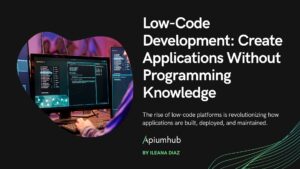Table of Contents
Software development has changed a lot in the last few decades. How developers build software has changed a lot over time. They started with simple instructions for machines, then moved to more complex and organized ways of writing code, then used tools to help them write and manage code, and now use systems to keep track of changes and collaborate with others.
AI-assisted coding is a new and significant development in this process. Some new tools, like GitHub Copilot, OpenAI’s ChatGPT Code Interpreter, Tabnine, and Amazon CodeWhisperer, let developers write code faster and easier. Instead of working alone, they can now work with smart agents that can help them write, change, and improve code as they go.
This paradigm shift raises important questions: How does AI-assisted coding compare with traditional coding? How does it help, and what problems or dangers does it cause? Does AI help or hinder human creativity and reasoning in software engineering, or is it taking over some tasks that humans used to do?
This article compares traditional coding methods with AI-assisted coding, looking at their advantages and disadvantages, how they work, how they affect productivity, and the ethical issues they raise. We want to find out if AI can help or replace human programmers, and how this affects the way we make software.
Traditional Coding: An Overview
Definition and Context
When coders do it all, the traditional coding approach is used. And while they might use text editors or integrated development environments for help, they don’t take advantage of AI to automatically produce code. They then use that skill, their knowledge of programming languages, and a whole lot more to make those solutions happen.
Characteristics
· Manual work: Code is written line by line, sometimes with little more than basic auto-completion or syntax highlighting to provide a helping hand.
· Knowledge-intensive: Coders must have a strong command of algorithms, data structures, language syntax, and design.
· Problem-solving focused: Human reasoning underlies architectural decisions and debugging methods.
· Automation: While things like tools and frameworks can indeed make development more efficient, they can’t reproduce the kind of singular vision and problem-solving abilities (for now, anyway) humans bring to the table.
Advantages
– Complete command allows developers to develop every part of the code, which is at their fingertips.
– Real understanding occurs when we write the code ourselves; it makes it easier, logic and algorithms all become clear.
– Programmers with experience guarantee the code to the finest of practices.
– Developers face fewer limitations on the data used by the AI, and the scope widens.
Limitations
– Complex features are sometimes made so slow and time-consuming, maybe days or weeks.
– Mistakes can happen, from typos to coding screwups.
– The learning phase is harsh; years can pass before one masters languages and frameworks.
– Developers have a limit on repetitive work, they struggle it sucks.
AI-Assisted Coding: An Overview
Definition
AI-assisted coding utilizes machine learning models which has been trained on enormous code repositories. These tools spit out real-time suggestions, autocompleting whole code blocks explaining errors, and sometimes they even design entire modules using prompts written in simple human language.
Characteristics
Context-aware suggestions: AI understands the present coding situation to offer relevant completions.
Natural language programming: Developers can describe functions using simple English, and the AI then generates code accordingly.
Automation of repetitive tasks: Code that’s boilerplate testing and document creation can all happen automatically.
Continuous learning: The AI tools are constantly getting better, interacting with more data and developer feedback.
Advantages
– Improved productivity: Routine coding stuff gets done faster, and developers then concentrate on high-level design instead.
– Lowers the learning hurdle: beginners achieve much more, without really mastering syntax.
– Error Reduction: AI can catch common mistakes, suggesting fixes.
– Code translation and refactoring tools: Help code adapt between languages and paradigms.
– Documentation support: AI can also generate those inline comments and usage examples.
Limitations
– Hallucinations: The AI might generate wrong, insecure code, thinking it’s perfectly fine.
– Black box behavior: Programmers may not really get the reasons behind the AI’s suggestions.
– Over-reliance: Developers won’t want to understand fundamentals.
– Ethical and legal issues arise potentially: Generated code could easily mimic content from licensed repositories, which is tricky.
– Security risks: AI can create code that seemingly passes tests, but contains dangerous faults.
Key Comparison Dimensions
| Key | Traditional coding | AI-assisted coding | Observations |
| Productivity | Developer skill sets, tooling, plus experience shape productivity levels in general. Big teams often split tasks to speed things up somewhat. | Developers now build prototypes real quick, maybe even in a flash. Generating boilerplate code really lightens their load. | Speed improves, but watch out, correctness could get tossed aside if humans don’t keep an eye out. |
| Code Quality | Quality shifts a lot depending on the skills developers possess. Style guides are often upheld by senior engineers, and those guys review the code | Quality may fluctuate, and at times it feels it can be inconsistent; sometimes even AI spits out elegant or flawed implementations. Code reviews are critical, no question | Novice developers can level up using AI; however, AI usage in an uncritical way could make small bugs show up. |
| Learning and Skills Development | Developers build up deep understandings of algorithm stuff, plus design patterns that are transferable in knowledge. | Developers run the risk of becoming just AI operators rather than being good problem-solvers, which is probably a weakness in core skills. | Educational supplements and not some kind of crutch are what AI tools work best as, in actuality |
| Creativity and Problem-Solving | Architecture selections, optimization, and novel problem-solving showcase creativity generally. | Instantaneous approaches for creativity through AI often arise. AI struggles with innovating data, and often, its data is the same. | Defining problems and original solution dreaming remains a vital job for us humans, for sure. |
| Debugging and Maintenance | Debugging in traditional coding demands careful step-by-step reasoning, detailed logging, and plenty of hands-on experience. | While helpful with error explanation and proposing fixes, those suggestions could seem quite surface-level. | Human interaction remains crucial to debugging; AI is a handy, but imperfect helper. |
| Collaboration and Teamwork | Teamwork necessitates good human communication, meticulous code reviews, and the sharing of documentation. | It’s almost like having a 24/7 “junior pair programmer”, decreasing reliance on teammates for standard queries. | AI aids collaboration, though it cannot replace that nuanced insight from human teamwork, for sure. |
| Security and Ethics | Developers are the ones responsible for traditional coding for things like security best practices, licensing rules, plus ethical coding conduct. | Faces risk of code-copyright infringement, generating unsafe implementation, and possibly biased algorithms. | Human oversight is really critical to ensure proper compliance, ethical standards, and maintain security. |
Practical Use Cases
Traditional Coding Dominance
- High-performance computing where efficiency is critical.
- Security-sensitive systems (e.g., avionics, medical devices).
- Novel algorithm design where no prior examples exist.
AI-Assisted Coding Dominance
- Rapid prototyping and proof-of-concept projects.
- Writing boilerplate or repetitive code.
- Onboarding junior developers through AI explanations.
- Cross-language code conversion.
The Future of Hybrid Workflows
Software development, its future is doubtful, going to be all traditional or even all AI. The plan instead is that a hybrid model shall emerge. Developers are designing the architecture with some core logic, while AI makes those scaffolding and repeating tasks, what a team!
AI, it’ll be super integrated in IDEs, doing the automation on testing, refactoring, and that documentation too.
Team will need some new roles such as “AI supervisors”, or “prompt engineers”, who’ll specialize in AI guidance effectively.
Ethics frameworks and regulations are going to set what’s acceptable with that AI code.
Conclusion
The comparison between traditional coding and AI-assisted coding reveals a fundamental truth: AI is not replacing programmers but transforming their roles. Coding is still very important for learning a lot, making sure things are good, and dealing with hard or dangerous systems. AI-assisted coding is transforming how we work, making it easier and more efficient. The way we do things is evolving, making everything more accessible for everyone.
Humans and AI can create amazing results together when developers use AI as a tool to enhance their thinking rather than as a replacement. It’s crucial to leverage the strengths of AI, like its speed and ease of use, while still preserving the quality, fairness, and creativity that only human developers can bring to the table.
Traditional coding is great for learning, while AI-assisted coding allows you to get things done more quickly. They show that software development is not a fight but a meeting—a chance to make software better by using both human ideas and computer power to deal with bigger problems.
Author
-

I am a Computer Engineer by training, with more than 20 years of experience working in the IT sector, specifically in the entire life cycle of a software, acquired in national and multinational companies, from different sectors.
View all posts









